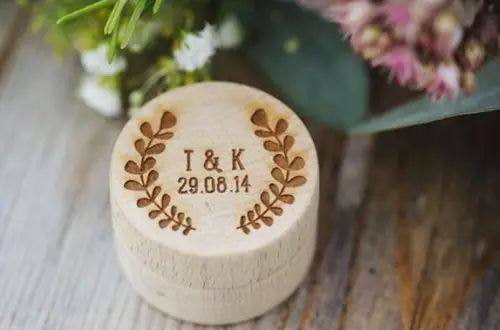You can share
- Share to Facebook
- Share to Google+
- Subscribe to our
- Share to Linkedin
- Share to Twitter

When a diamond ring turns yellow quietly in a low-quality density board box, when an antique brooch leaves a trace on velvet, the choice of jewelry box material is directly related to the life of the treasure. This article will reveal the secrets of jewelry packaging box materials for buyers and provide practitioners with golden rules for material selection.
(1) Natural wood series (heirloom-level protection)
Walnut/walnut: density ≥ 0.67g/cm³, natural humidity control, and moisture-proof, the first choice for silverware storage
Purple sandalwood: hardness HRC85, impact resistance 3 times that of ordinary wood, the exclusive choice for top watch boxes
Consumer attention: Look for FSC certification to avoid the risk of insect infestation
Practitioner tips: The direction of the wood grain affects the opening and closing life, and a 45° bevel is required
(2) Metal series (commercial-level protection)
Aviation aluminum: wall thickness can be pressed to 0.8mm, the first choice for lightweight travel jewelry boxes
Brass chrome plating: density 8.73g/cm³, standard for retro jewelry display cabinets, but requires anti-fingerprint coating. Fatal flaw: metal condensation problem (use with caution in the south)
(3) Composite new materials (the king of cost-effectiveness)
Food-grade ABS: FDA-certified, the same safety standard as baby bottles
Honeycomb aluminum plate: bending strength of 18kN·m/kg, 60% lighter than solid wood
Industry trend: 3D printing PLA material rises, supports special-shaped structure customization

(1) Textiles
Velvet: friction coefficient is only 0.23, but static electricity attracts dust (anti-static treatment is required)
Acid-free chenille: pH value 7.5-8.5, museum collection standard, cost +40%
Buyer warning: color fastness ≥4 level to prevent fading pollution
(2) Synthetic materials
Memory foam: rebound rate 92%, perfect fit for special-shaped jewelry, saving 30% space
Antibacterial suede: implanted with silver ion fiber, antibacterial rate 99.2% (suitable for earrings and other intimate items)
Practitioner data: medical-grade silicone lining costs 5 times that of ordinary flannel, but the customer complaint rate is reduced by 80%.
(1) Protective coating
UV isolation film: blocks 97% of ultraviolet rays (must be equipped for sapphire cabinets)
Anti-sulfurization coating: contains zinc compounds, which delay the blackening speed of silver jewelry by 300%
(2) Decorative coating
Piano paint: requires 12 processes, mirror effect but low wear resistance
Nano etching: laser engraving depth 0.1mm + oleophobic layer, eliminating fingerprint troubles
Consumer avoidance guide
✘ Toxic material: scented wood (may contain benzene)
✘ Pseudo-environmental protection: claiming to be "ecological leather" but without GRS certification
✔ Must-check items: SGS report focuses on formaldehyde/azo dyes/heavy metals
Cost minefields for practitioners
- Solid wood drying does not meet the standards (cracking rate soars)
- Poor quality adhesive (formaldehyde release cycle up to 15 years)
- Velvet is not treated with anti-siphoning (fades and dyes jewelry when exposed to moisture)
Ultimate Q&A: Deciphering the Material Myth
Q: What is the safest material for baby jewelry boxes?
A: Food-grade ABS box body + medical silicone lining, to avoid any metal parts
Q: How does a jewelry store display box balance cost and texture?
A: Honeycomb aluminum plate is used as the base material (cost reduction of 60%), and the surface is covered with 0.5mm solid wood veneer, which feels the same as solid wood
Q: What are the core indicators of heirloom-level jewelry boxes?
A: Three elements——
1. Wood moisture content 8%±1% (North American NGRL standard)
2. Mortise and tenon structure connection points ≥8
3. Lining color fastness reaches the highest level of ISO 105-B02
You are here for details about the materials of jewelry packaging boxes. We are a jewelry packaging box factory with 20 years of experience. If you need to customize jewelry boxes, please get in touch with us.